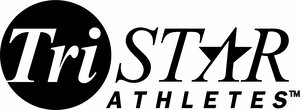★★★Macro Nutrients: Nutrition Optimization fueling for leaning out & weight loss prior to workouts (FFWL)
As part of your training/nutrition plan at Tristar, before your training session you need to determine what to eat. This ultimately starts the conversation of “where you are” and where you are going for todays training. Our coaches have put together the following decision support to fuel your training in realtime.
Fueling for weight-loss (FFWL)
FFWL: This is intended for lower intensity training and or short to longer sessions where the overall effort is a rate of perceived effort of a 2-4 or less on a scale from 1-10 and heart rate zones two and lower.
FFWL: For low intensity sessions lasting < 90minutes you may not need fuel at all with the exception of water. The bodies fat stores and muscle glycogen can fuel your training. Doing this will train in the fat burning zones, enhance insulin sensitivity and teach the body to burn fat as a source of fuel. NOTE: if you are training harder than this you should be fueling for performance (FFP)
FFWL: If however you are “light” meaning your body is semi fasted and or glycogen stores are low you will need to consume a level of good fats or proteins. Avocados and nuts are examples of good fats that can satiate (Watch the total calories here as they are 9 calories per gram versus protein at 4 calories per gram.) If you chose protein, a good source may be weigh protein powder, lean meats, tofu, and for example fage yogurt. The idea is to provide stable energy without triggering an insulin response in which insulin is the hormone responsible for storing fat and burning carbohydrates as energy. (High levels of insulin are caused by consuming carbohydrates). If however you are VERY low in energy (or blood sugar at start) you should rather use our fueling for performance protocols (FFP).
FFWL: If you are training >= 3hrs for the day, then we recommend fueling following the 2+ hours prior (FFP) protocol before you execute your longer distance training. In this scenario, you would consume calories early before a long days training and perhaps NOT eat for the first 60-90minutes as part of FFWL. After this initial non fueled window you would follow our Tristar race fueling recommendations for training and racing assuming the intensity is “high”. if the intensity is low (RPE, Rate of perceived effort < 4) you may continue to do your training fueling with 30-50% fat/protein and 50% carbohydrates. Total calories here would range from 100-300 per hour based on the athletes size and weight. (More for larger athletes and less for smaller.)
FFWL: Due to the lower intensity nature of this type of activity, more ranges of foods can be considered that burn slow and or have more fiber. This would not be the case for higher intensity sessions > rate of perceived effort of “5”, heart rate zone 2 and > ~65% of FTP.
FFWL: For those athletes who drink alcohol, leaning out may be extremely difficult. Alcohol is good for a few laughs but thats about it! Due to the empty calories, these drinks are converted to fat stores defeating the purpose of the FFWL approach.
FFWL: Supplements? We generally espouse at Tristar an organic diet of mostly fruits and veggies with balanced protein. From time to time we like our athletes to use performance products as needed. One product that helps athletes to stay satiated and lean out before, during and after training is generation UCAN. ( learn more here.)







![💡Examples of alternate site rotation schedules?!
[Know someone who wears Omnipod? Or Dexcom? Or is Looping? Tag a friend 🏷 ..What is your favorite site location? Leave us a comment 💬 and save this infographic for greater insulin absorption.]
👉](https://images.squarespace-cdn.com/content/v1/5af9e068697a988a0d722b70/1623198151507-90QOJFSSOTUCYVC81GZ9/image-asset.jpeg)













